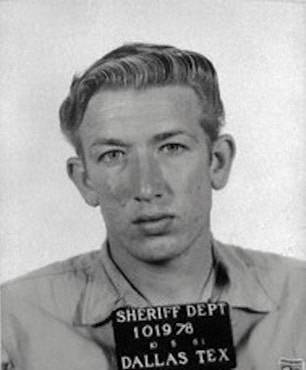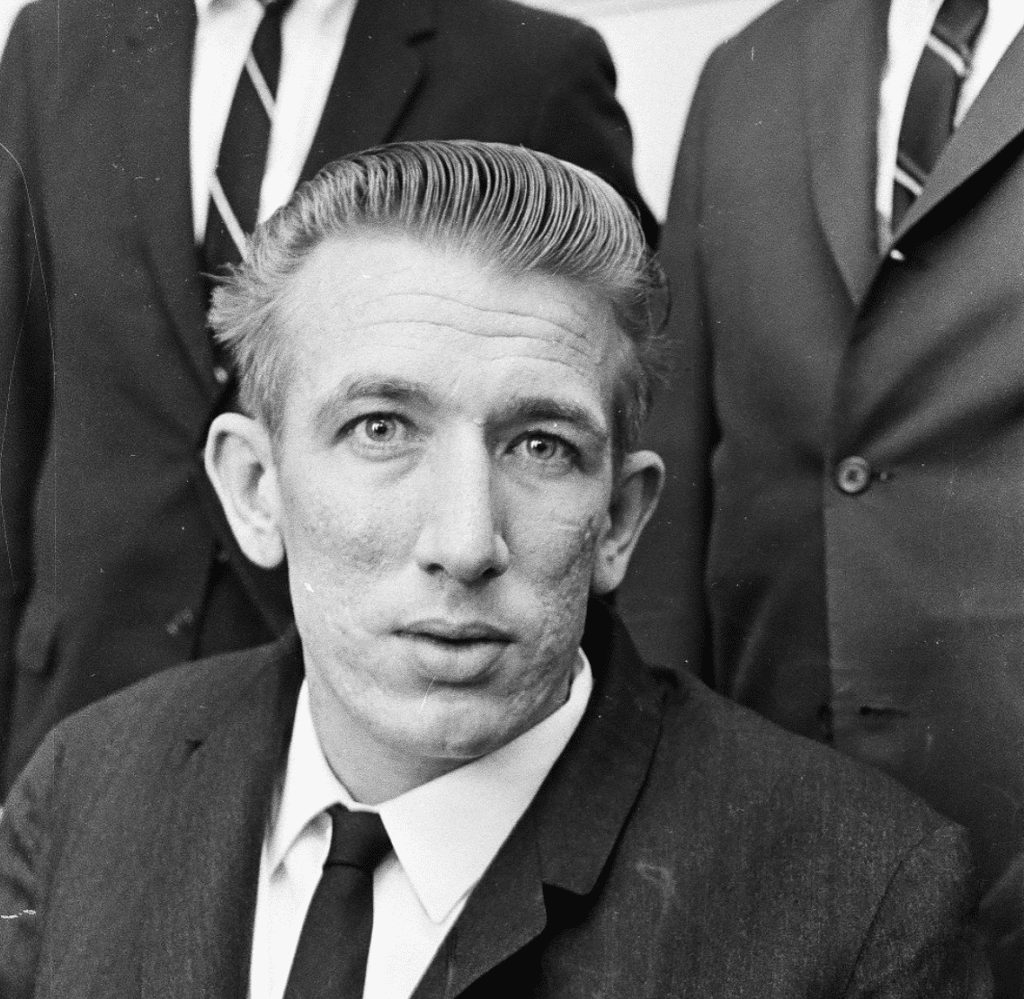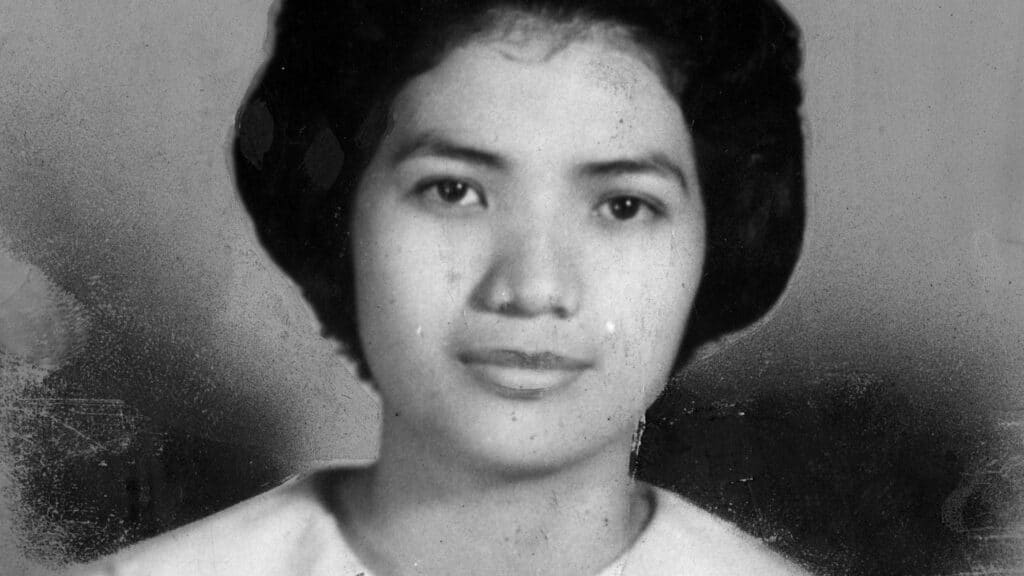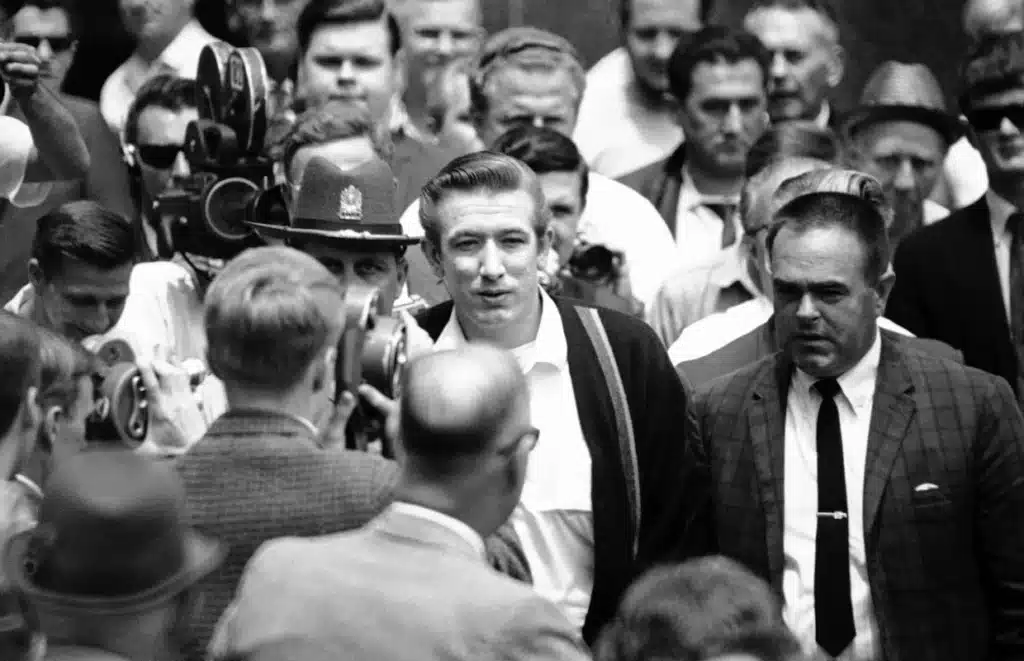In 1941, Speck was born in Kirkwood, Illinois to Benjamin Speck and Mary Carbaugh, religious teetotalers. A teetotaler is someone who is completely abstinent from alcohol and refuses to drink, usually on religious grounds.
This alcohol-free, disciplined environment is what Speck grew up with for the first six years of his life before his father passed away from a heart attack. Speck was close with his father, so his passing was difficult for Speck to process.
Three years later, Speck’s mother would marry Carl Lindberg, a man she met on a train to Chicago.
Lindberg was a traveling insurance salesman and had a criminal record of over 25 years, with his varied crimes including forgery and DUIs. Impressively, Speck would bypass Lindberg’s criminal record before the end of his life.
The largest irony of Mary’s remarriage would be how drastically different Lindberg was from Benjamin. Speck and his siblings went from having a teetotaler father to one who was consistently drunk.

Struggling at Home and at School
When he was drunk, which was often, Lindberg would be abusive towards the children; that is, when he was not absent from their lives completely. This sudden change and detachment from his father figure, paired with the criminal example set by his stepfather, would drastically influence Speck’s upbringing.
Speck would attend multiple schools over the next 6 years as the family relocated to Texas, where Lindberg was from, and then rotated through a series of houses in poor neighborhoods.
He did not do well in school. He refused to wear the glasses he needed to read and was too quiet to participate, which hurt his performance.
By sixteen, Speck had failed nearly all his classes and dropped out of school entirely. Contributing to this was that Speck started drinking at age 12 and was regularly drunk by the time he was 15.
Alongside his drinking, at 13 he was arrested for trespassing. This was the start of a lifetime of criminal activity.
The Early Crimes
After dropping out, Speck worked at the 7-Up factory in Dallas. He married a 15-year-old girl he met at the Texas State Fair in 1961.
The two had a child the next year, who was born while Speck served jail time for a drunken fight. They would be divorced in 1966 after a period of separation. This was likely due to Speck’s increasing criminal behavior and the fact he had spent the majority of the last 3 years in jail.
In July 1963, Speck forged a work check and robbed a grocery store. These crimes landed him a three-year prison sentence.
He was paroled in 1965 after 16 months served. However, this only lasted a week before he was sentenced to 16 months for aggravated assault, to be served simultaneously with a parole violation sentence.
Due to a clerical error, he only served six months for his parole violation. He then robbed another grocery store and fled the state when police tracked the car he used and issued a warrant for his arrest. Had the police caught him, it would be his 42nd arrest in Dallas and likely would have resulted in another prison sentence.
Returning to Illinois
His sister drove Speck to the train station just one day after the warrant was issued and he fled the state to Chicago. After a few days, he decided to return to his hometown of Monmouth.
During his time there, he stayed with old family friends and his brother Howard was able to secure Speck a job. Less than a week later his ex-wife was granted an official divorce, and she remarried within days.
This was likely a trigger for Speck who soon began another string of murders and assaults. By the end of the month, Speck was again detained by police, this time for threatening a patron in a bar with his knife.
Just a few days later, an older woman named Virgil Harris was sexually assaulted and robbed in her home in Monmouth. Her description fit that of Speck: a tall white man with a southern drawl who used a knife as his weapon of choice.
A week later a young woman named Mary Pierce went missing. She worked at Frank’s Place, a bar that Speck frequented, and her body was found behind a hog house that Speck had helped construct the month before.

Suspicions Arise
Police questioned Speck as he picked up his last paycheck, asking him to stay in town a few days just in case they had more questions. When they went to talk with him four days later they found Speck had fled the hotel he was staying at.
Hotel workers said Speck claimed he was going out earlier that morning to do laundry but they would find that he had left town. Law enforcement found items from Harris’ house in Speck’s room, along with items from other recent burglaries.
Speck returned to Chicago where he stayed with his sister Martha’s family. After feeding them a lie about why he had left Monmouth, Martha’s husband Gene assisted his brother-in-law with getting a new job.
As an ex-Navy serviceman, Gene thought Speck could have a good job with the US Merchant Marine and helped sign him up as an apprentice seaman. He then bounced between various ships, Michigan, and Chicago for the next few months.
His first voyage was cut short by the need for an appendectomy, for which he was airlifted to a hospital in Michigan. After a short period of rest that he spent with his sister again, Speck returned to his post until he got into a fight with one of the ship’s officers and was placed ashore.
The Mass Murderer
Early July would see Speck slowly spiral back to his violent ways. After a couple of months, his family was tired of him returning to their home constantly. They were on edge trying to assist him with getting work.
In the span of a week, Speck was beaten out for multiple new jobs. Without the security of his sister’s home, he turned to drinking near the rooming house he stayed at.
After he was drunk, Speck began a short reign of terror in Southern Chicago. He sexually assaulted a woman he met at a bar before turning to a townhouse nearby which was used for housing nursing students.
Speck, who claims he was high and drunk, broke into a townhouse where eight nursing students lived. He spent hours killing them off one by one.
One woman, Corazon Amurao, survived the ordeal by hiding under the bed while Speck was out of the room; it is unknown if Speck merely lost count of the women or if he was unaware that a ninth woman was ever there to begin with.

Speck’s Capture
Speck was first identified by a homeless man who recognized Speck’s face in the newspaper, although the police ignored the call at first. It was not until a few days later that Speck would be arrested.
After Speck attempted to commit suicide, the workers of the hotel Speck was staying at called emergency services. The doctor who was treating Speck recognized a tattoo and called the police.
After his arrest, he was found competent to stand trial and was sentenced to death. However, the death penalty was ruled unconstitutional before he was killed.
His sentence then changed to 400-1200 years in prison, although it was later reduced to 100-300 years. He became the subject of many scientific studies trying to rationalize criminality.
He was believed to be developmentally hindered by brain damage from his early youth. Speck passed away in prison in 1991 of a heart attack.

Could Speck Happen Today?
In today’s world, Speck likely would not have been able to make it to Chicago to commit the murders that he did.
Throughout his life, Speck was arrested over 50 times, most of which were in Dallas, a single location. But before the advent of the internet and cell phones, it was more difficult for law enforcement to coordinate resources and information across different towns, let alone state lines.
When Speck arrived back in Illinois, no one knew his criminal history. As a criminal with such an absurd number of arrests, he likely would have been recognized and detained earlier in today’s world.
The Dallas police could have shared his information with other state or federal authorities who could have kept tabs on Speck. Or police who were suspect of Speck in Indiana could have easily checked his record and taken more aggressive action to detain him.
It is a relief to consider how many criminals similar to Speck have been detained due to increased communication across the nation and the world.
References
Galven, JoJo. “The First Mass Murderer: Richard Speck in Chicago.” Chicago History Museum, July 13, 2023. https://www.chicagohistory.org/first-mass-murderer-richard-speck/.
Sobol, Rosemary. “Rare photos, interviews honor 8 nurses slain by Richard Speck in 1966.” The Chicago Tribune, June 14, 2016. https://www.chicagotribune.com/news/ct-richard-speck-chicago-mass-murder-victims-20200815-ofyebzxw5jgxrloxvxe4xmezwq-story.html.

